
You’ve probably heard of the ultra-trendy Whole30 program, the diet that prohibits you from eating sugar, alcohol, grains, dairy, legumes, and more. And if there’s one thing you know about it, it’s that it’s pretty freaking brutal. (And there’s a no-cheating policy underlying these harsh guidelines: Bending the rules lands you back at day one.)
Of course, the potential benefits of the Whole30 diet keep people in line. While actual data on the diet is scarce, anecdotally speaking, Whole30 survivors often report better digestion, higher energy levels, and weight loss as a result of trying the diet, though these results might not apply to everyone.
“According to the creators of Whole30, for some people certain types of foods may be exacerbating issues in the body,” Andrea Goergen, M.H.S., R.D.N., L.D.N., owner of Cultivate Healthy in Washington, D.C., tells MensHealth.com. “The idea is that eliminating common sources of these reactions can allow the body to heal and provide relief of negative symptoms.”
If you’re thinking about embarking on a round of Whole30 (or you’re feeling stuck in the middle of one), keep this list on hand to remind you of your options. Here’s what you can eat on the Whole30 diet.
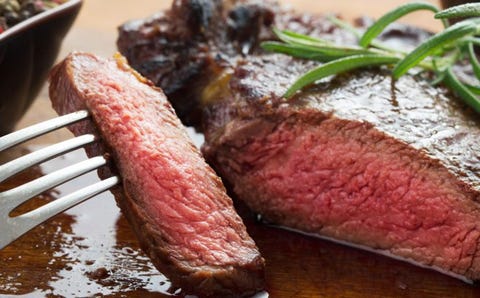
Thinkstock
Meat is a cornerstone of the Whole30 diet. That’s good news, since fueling up on protein is key to keeping hunger at bay and dodging cravings for non-Whole30 approved foods. Ideally, the meat you buy should be organic and grass-fed, but ultimately, pretty much any non-processed (re: bacon, ham, salami, etc.) meat is on the table: beef, chicken, turkey, pork, lamb, duck, you name it.
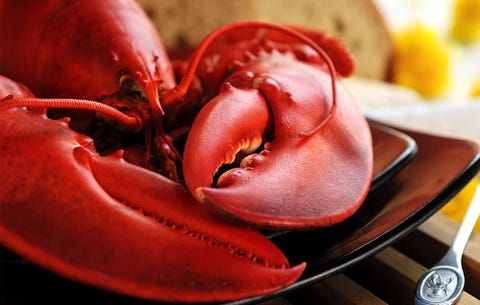
Getty Images
Seafood is a great way to get your protein fix if you need a break from meat — and on the Whole30 diet, it’s all allowed (including shellfish). S
ome types of seafood have more benefits than others, though. “I recommend incorporating at least two 3.5-ounce weekly servings of cooked fatty fish like salmon, sardines, and herring into your diet,” says Amy Gorin, M.S., R.D.N., owner of Amy Gorin Nutrition in the New York City area. “These types of seafood offer health-helping omega-3 EPA and DHA, which can benefit everything from brain to heart health and more.”
Additionally, the Whole30 guidelines recommend wild-caught and sustainably fished seafood (although farm-raised fish isn’t necessarily off limits).
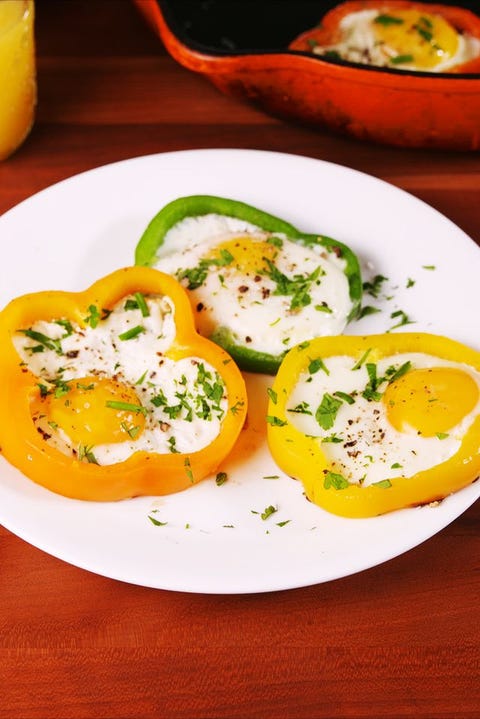
Charlie Gillette
It just might be impossible to get through a round of Whole30 without leaning heavily on eggs. “They boast high-quality protein, helping you feel fuller for longer,” says Gorin. “Eggs also offer choline, which can benefit cognitive health later in life.” (Just make sure you’re eating the yolk as well for this benefit, not just the whites.)
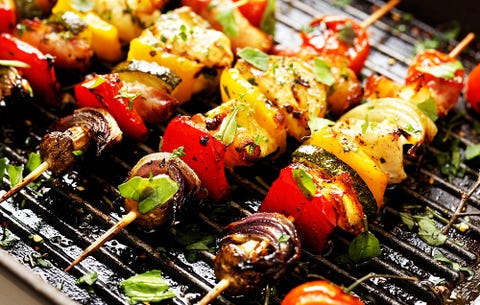
Getty Images
If you try the Whole30 diet, rest assured that pretty much every vegetable is on the table, so you can take a gander through the produce section of your grocery store with total freedom.
“Vegetables offer fiber, which is not only satiating but can benefit cholesterol levels,” says Gorin. They’re also generally lower in calories than most food groups. (Green beans, sugar snap peas, and snow peas are included in this category, even though they’re technically legumes, most of which aren’t allowed on the Whole30 diet.)
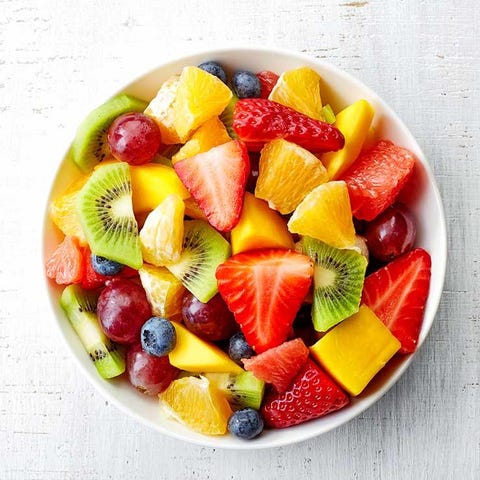
Shutterstock
While the Whole30 creators don’t say you can eat as much fruit as you want, eating some fruit is definitely encouraged. “In addition to offering vitamins, minerals, antioxidants, and fiber, fruit is also very hydrating, which is important for the summer months,” says Gorin. (Plus, it can help semi-satisfy a sweet tooth.)
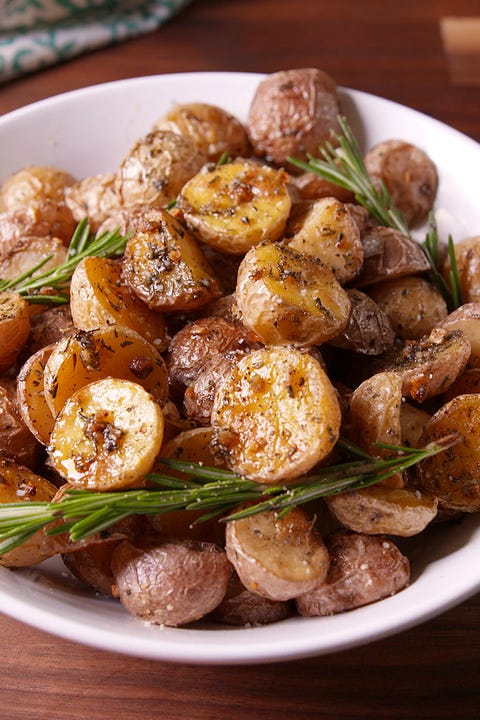
Chelsea Lupkin
While these technically fall under the “vegetable” category, potatoes are one of the more surprising inclusions on the Whole30. And it’s not just sweet potatoes that get the stamp of approval — white potatoes are also allowed on the Whole30 (as long as they’re not in the form of French fries). “White potatoes are seen as ‘bad’ because they can be high in starch, but they are a whole food and also contain great nutrients,” says Diana Rodgers, R.D., L.D.N., founder of founder of Sustainable Dish. Think fiber, potassium, and vitamin C. (Sweet potatoes also boast high levels of vitamin A.)
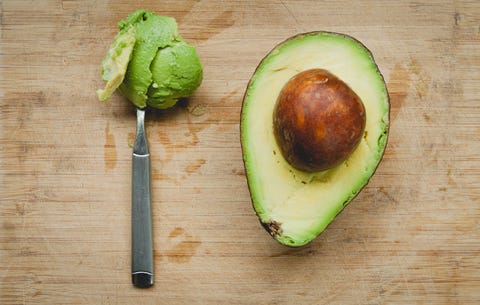
Getty
Avocados, olives, cashews, and coconuts are all high-fat and keep you fuller for longer, says Gorin. Of course, in the case of foods like avocados, which are high in calories, moderation is key. On the other hand, olives are great to snack on because they’re relatively low in calories. The Whole30 diet also allows for nuts and seeds occasionally (aside from peanuts, which are technically legumes).
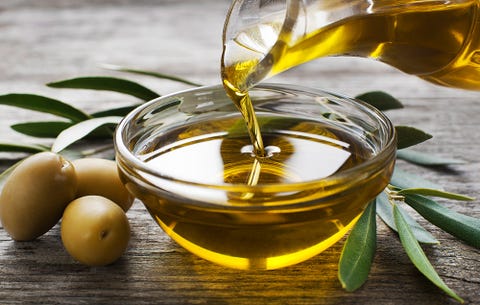
Getty
Good news for olive oil fans: the Whole30 diet considers extra virgin olive oil, ghee, clarified butter, and coconut oil totally OK. The authors of the diet refer to these as “cooking fats,” though you can use them to top off other foods as well. (You can, for instance, drizzle a salad with a little EVOO for an extra filling fat boost.)

Thinkstock
Thankfully, coffee is allowed on the Whole30 (sans cream and sugar, of course). “You can add a dash of cinnamon to your coffee to slightly sweeten it,” suggests Gorin. Plus, coffee actually has some promising health benefits: because it contains antioxidants and polyphenols, it may cut your risk for diabetes, kidney stones, and certain cancers.
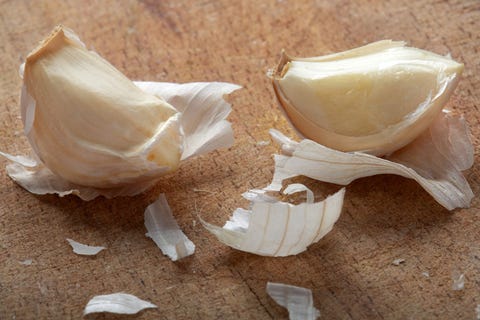
Shutterstock
This is your opportunity to get crafty on the Whole30 — since most herbs, spices, and seasonings are allowed, they can help prevent your meals from feeling boring and repetitive. “These are so great for adding low-calorie flavor to meals,” says Gorin. “Some of my favorites are nutmeg and cinnamon for sweeter recipes (add a dash to grilled fruit); and garlic, red pepper flakes, and rosemary for savory dishes.”
Source: Read Full Article